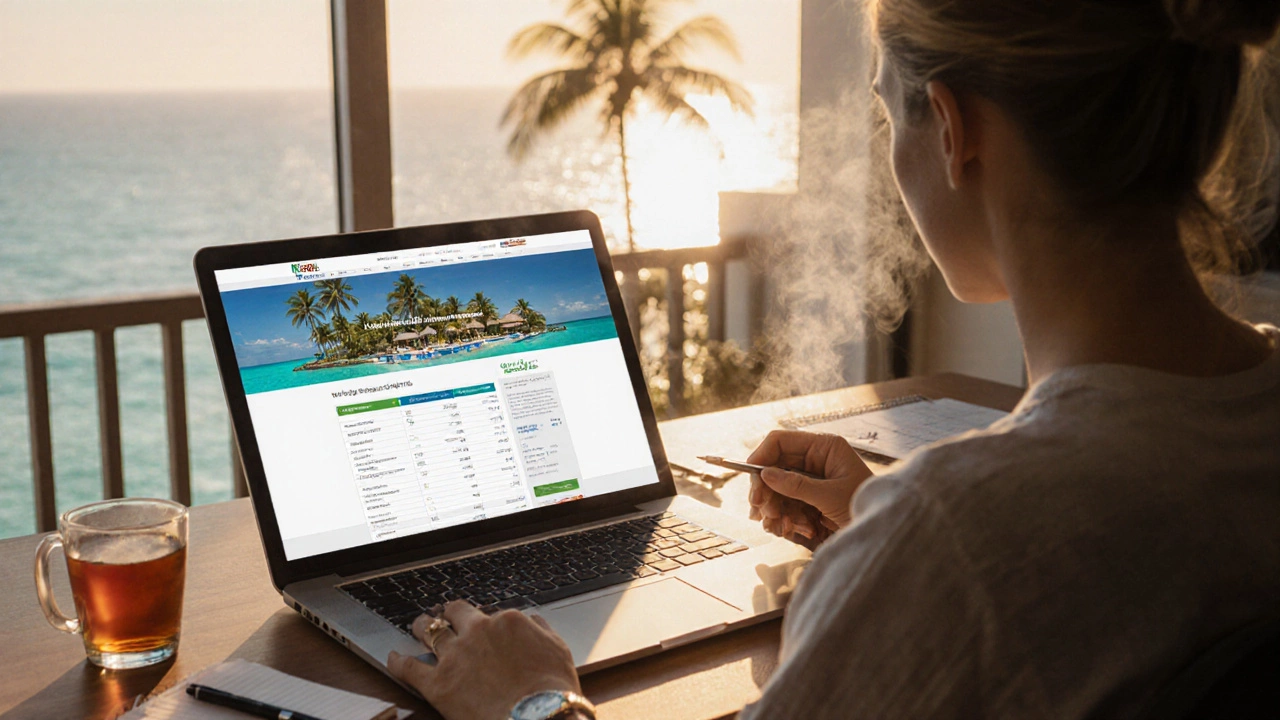All-Inclusive Resort Score Calculator
Evaluate resorts using the four pillars from the article. Assign weights to your priorities, score each criterion, and get a personalized recommendation.
Your Priorities
Resort Scoring
Based on your priorities and scores. Scoring range: 0-25
Finding a good All-Inclusive Resort is a mix of research, personal priorities, and a bit of luck. You want a place where the food, drinks, activities and the vibe all line up with your vacation goals, without hidden fees or surprise disappointments. Below is a practical roadmap that takes you from the first idea of a getaway to a confident booking, all while keeping the process clear and manageable.
What Makes an All‑Inclusive Resort "Good"?
A "good" all‑inclusive resort does more than just bundle meals and drinks. It delivers consistent quality across four pillars:
- Food & Beverage: Fresh, varied menus, plenty of local flavors, and quality drinks (including premium brands if promised).
- Activities & Entertainment: A mix of on‑site sports, cultural experiences, kids’ clubs, and nightly shows that suit your travel party.
- Accommodation Comfort: Clean rooms, reliable Wi‑Fi, comfortable beds, and amenities that match the price tier.
- Service & Transparency: Friendly staff, clear communication about what's truly included, and no surprise extra charges.
When each of these areas scores well, the resort usually lives up to the all‑inclusive promise.
Step 1: Define Your Priorities
Before you start scrolling through endless lists, write down the three to five things that matter most to you. Common priorities include:
- Budget: Total cost per night, taxes, and optional upgrades.
- Travel style: Family‑friendly with kids’ clubs, adults‑only for romance, or adventure‑oriented.
- Location: Beachfront, mountain view, city center, or secluded island.
- Food preferences: All‑buffet, à la carte, specialty restaurants, dietary accommodations.
- Sustainability: Eco‑certifications, waste‑reduction programs, local sourcing.
Putting these on paper helps you filter out resorts that don’t fit, saving hours of wasted research.
Step 2: Use the Right Research Tools
Not all travel sites are created equal. Here are the most reliable sources and how to get the most out of each:
- Review aggregators - TripAdvisor and Booking.com provide large‑scale guest scores. Sort by "All‑Inclusive" and look for recent reviews (within the last 12 months).
- Specialist blogs - Travel writers who focus on all‑inclusive vacations often publish detailed breakdowns of food quality, pool vibe, and hidden costs.
- Social media groups - Facebook groups or Reddit’s r/TravelHacks have real‑time anecdotes and deal alerts.
- Travel agents - A reputable agent can access exclusive packages and will often know which resorts have been upgraded or downgraded recently.
- Official resort websites - Scrutinize the "What’s Included" section; compare it against the fine print on third‑party booking pages.
Cross‑checking at least three sources reduces bias and uncovers details that any single source might miss.
Step 3: Evaluate Amenities and Inclusions
All‑inclusive sounds simple, but the devil is in the details. Use the table below as a quick‑reference checklist when you compare resorts.
| Criterion | Why it matters | Typical range / what to look for |
|---|---|---|
| Food variety | Prevents boredom and caters to dietary needs | 2+ themed buffet nights, à la carte restaurants, vegetarian/vegan options |
| Drink packages | Limits hidden bar tabs | Premium wines, top‑shelf spirits, unlimited non‑alcoholic drinks |
| Activity roster | Ensures you stay entertained without extra fees | Water sports, fitness classes, kids’ clubs, cultural tours |
| Room type | Impacts comfort and privacy | Sea view, balcony, air‑conditioning, amenity kit |
| Wi‑Fi quality | Essential for work‑cations or staying connected | Free, 24/7, minimum 5Mbps per device |
| Eco‑certifications | Shows commitment to sustainable tourism | Blue Flag, Green Key, EarthCheck |
Mark any item that falls short of your baseline - that’s a red flag to investigate further.
Step 4: Check Safety, Accessibility, and Sustainability
Even the most lavish pool can’t compensate for a resort that feels unsafe or inaccessible. Verify these points:
- Health protocols: Current COVID‑19 guidelines, on‑site medical facilities, and emergency contact numbers.
- Location safety: Crime rates in the surrounding area, travel advisories from your government, and night‑time transport options.
- Accessibility: Ramps, elevator access, and adapted rooms if you need them.
- Environmental impact: Programs for water conservation, waste recycling, and support for local communities.
Most reputable resorts list these details under a "Sustainability" or "Safety" tab on their site.
Step 5: Book Smart - Timing, Deals, and Loyalty
Even after you’ve found the perfect spot, timing can change the price dramatically. Here’s how to lock in the best rate:
- Travel off‑peak: Late‑season weeks often bring 20‑30% discounts while still offering good weather.
- Set price alerts: Use Google Flights or a dedicated price‑watch tool for the resort’s package price.
- Check package inclusions: Some deals bundle airport transfers, travel insurance, or resort credits that add value.
- Leverage loyalty programs: Chains like Iberostar, RIU, or Sandals award points that can be applied to future stays.
- Read the cancellation policy: Flexible bookings can save you if the trip needs to be postponed.
When you see a price that matches your budget and includes your must‑have amenities, go for it - but double‑check the fine print for any hidden resort fees.

Step 6: Post‑Booking Checklist
Booking isn’t the end of the process. Follow this simple list before you pack:
- Confirm your room type and view in the reservation email.
- Request any dietary restrictions or special accommodations (e.g., wheelchair‑accessible room).
- Print or download the resort’s "What’s Included" sheet.
- Arrange airport transfers - many resorts offer complimentary shuttles if you book early.
- Purchase travel insurance that covers resort cancellations and medical emergencies.
Doing these steps ensures a smooth arrival and lets you start your vacation with zero stress.
Quick Recap - The 5‑Point Formula
To keep everything straight, remember this short formula:
- Priorities: Know your must‑haves.
- Research: Use at least three reputable sources.
- Checklist: Score each resort against the table above.
- Timing: Book during off‑peak or when alerts trigger.
- Confirm: Verify details and secure travel insurance.
Follow the steps and you’ll land on a resort that truly delivers on the all‑inclusive promise.
Frequently Asked Questions
What’s the difference between an all‑inclusive resort and a typical hotel?
An all‑inclusive resort bundles meals, drinks, activities and often airport transfers into one upfront price, while a typical hotel usually charges for each service separately. This model helps you predict the total cost and reduces on‑site spending.
Are all‑inclusive resorts family‑friendly?
Many resorts cater to families with kids’ clubs, water parks, and teen activities. However, there are also adults‑only properties that focus on romance or nightlife. Check the resort’s target audience before booking.
How can I know if the food quality is actually good?
Look for recent guest photos on TripAdvisor or Instagram, read the proportion of 4‑star and above ratings, and see if the resort advertises specialty restaurants or chef‑driven menus. Reviews that mention fresh local ingredients are a good sign.
Is it worth paying extra for a premium drink package?
If you enjoy cocktails, fine wines, or top‑shelf spirits, a premium package can save 30‑40% compared to buying à la carte. Check the list of included brands; sometimes the upgrade only adds a few extra labels, which may not justify the cost.
What eco‑certifications should I look for?
Trusted labels include Blue Flag (beaches), Green Key, and EarthCheck. These programs audit water usage, waste management, energy efficiency, and community outreach. Resorts displaying them usually have concrete sustainability policies.
Armed with this guide, you’re ready to cut through the noise and pick a resort that lives up to its all‑inclusive hype. Happy travels!
